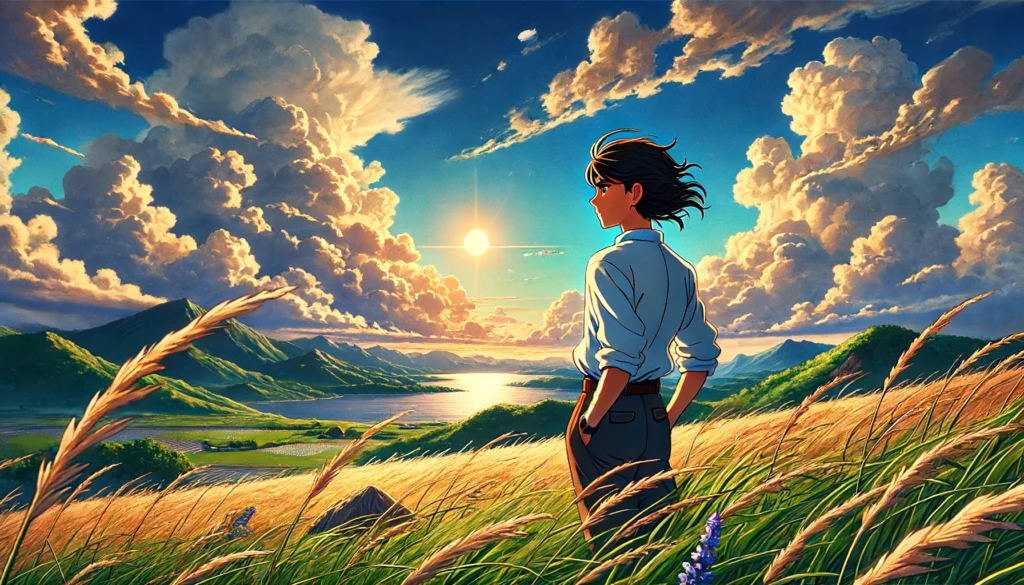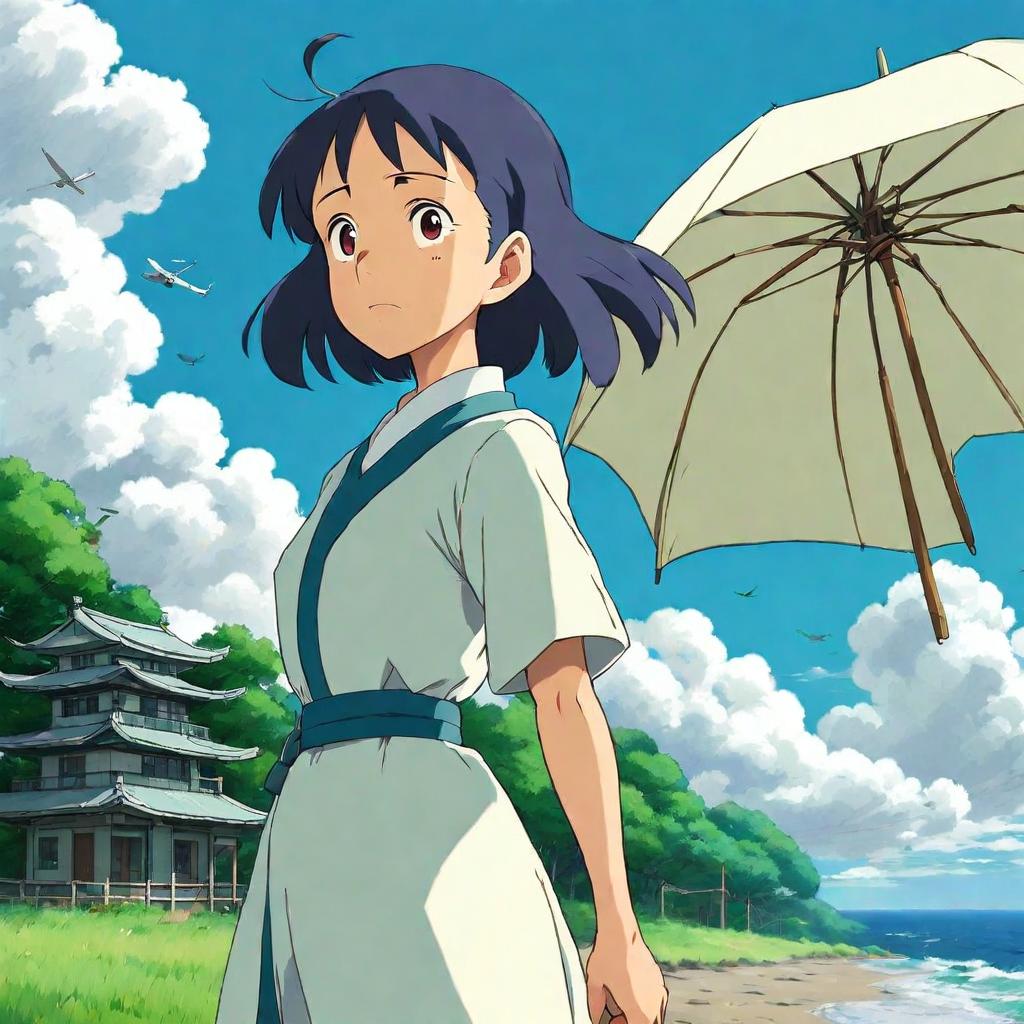
Table of Contents
Introduction
In the vast landscape of anime films, “The Wind Rises” stands as a monumental achievement by the acclaimed director Hayao Miyazaki. Released in 2013, this film is a poignant, semi-biographical narrative that delves into the life of Jiro Horikoshi, the genius behind the design of the Mitsubishi A5M and its successor, the Mitsubishi A6M Zero. These aircraft played significant roles during World War II. Miyazaki’s swan song is a heartfelt tribute to the pursuit of dreams amidst the turbulence of history. This SEO-optimized review will explore the themes, animation, characters, and cultural impact of “The Wind Rises,” offering a comprehensive analysis of this masterpiece.
Plot Summary
“The Wind Rises” follows the life of Jiro Horikoshi from his childhood to his adult years, highlighting his passion for aviation. As a young boy in Japan, Jiro dreams of flying beautiful airplanes. However, due to his nearsightedness, he realizes he cannot become a pilot. Undeterred, Jiro shifts his focus to designing aircraft. The film intricately weaves historical events, such as the Great Kanto Earthquake of 1923 and the economic hardships of pre-World War II Japan, into Jiro’s journey.
His path crosses with Nahoko Satomi, a young woman he met during the earthquake. Their relationship blossoms into a deep and tragic love story, adding an emotional layer to Jiro’s professional aspirations. The narrative is both a celebration of human creativity and a sobering reflection on the costs of technological advancement.
Themes and Symbolism in The Wind Rises
“The Wind Rises” is rich with themes and symbolism, making it a profound cinematic experience. One of the central themes is the conflict between dreams and reality. Jiro’s dreams of creating beautiful airplanes are constantly juxtaposed with the harsh realities of the world he lives in, including the moral implications of his creations being used as instruments of war.
The wind serves as a recurring symbol throughout the film. Inspired by a quote from Paul Valéry, “The wind is rising! We must try to live!” it signifies change, inspiration, and the inevitability of fate. The wind propels Jiro towards his dreams but also brings the storms of war and personal loss.
Miyazaki also touches upon the theme of perseverance. Jiro’s journey is marked by obstacles, from natural disasters to health issues and societal challenges. His unwavering dedication to his craft, despite these hardships, is a testament to human resilience.
Character Analysis
Jiro Horikoshi is portrayed as a dreamer and a visionary. His character embodies the spirit of innovation and the pursuit of excellence. Miyazaki paints Jiro not just as an engineer, but as an artist whose canvas is the sky. His passion for aviation is palpable, yet he remains a humble and introspective individual, constantly aware of the ethical dilemmas his work entails.
Nahoko Satomi, Jiro’s love interest, is a symbol of grace and fragility. Her character adds a deeply personal and emotional dimension to the film. Despite her battle with tuberculosis, Nahoko’s love for Jiro remains steadfast. Their relationship, though marred by tragedy, is depicted with a tenderness that underscores the human capacity for love amidst suffering.
Supporting characters like Honjo, Jiro’s colleague, and Kurokawa, his mentor, provide additional layers to Jiro’s story. They represent different facets of the aviation industry and the broader societal context of the time.
Animation and Visual Style
Studio Ghibli’s animation in “The Wind Rises” is nothing short of breathtaking. The attention to detail in the aircraft designs, the lush landscapes, and the period-accurate settings transport viewers to early 20th century Japan. The use of hand-drawn animation adds a layer of authenticity and warmth to the film, a hallmark of Miyazaki’s work.
The dream sequences, where Jiro converses with the Italian aircraft designer Giovanni Battista Caproni, are particularly striking. These scenes blend reality and fantasy, capturing the essence of Jiro’s visionary spirit. The animation fluidly transitions between the mundane and the magical, reflecting the duality of Jiro’s inner world.
Miyazaki’s meticulous research is evident in the technical accuracy of the aircraft and the historical events depicted. The film’s visual style, with its pastel color palette and soft lighting, evokes a sense of nostalgia and melancholy, perfectly complementing the narrative’s tone.
Soundtrack and Audio
The film’s soundtrack, composed by Joe Hisaishi, is a masterful accompaniment to the visual storytelling. The music is both haunting and uplifting, mirroring the emotional journey of the characters. Hisaishi’s score utilizes traditional Japanese instruments alongside orchestral arrangements, creating a soundscape that is both timeless and evocative.
Particularly notable is the theme “Hikouki-gumo” (Contrail) by Yumi Matsutoya. This song, which plays during key moments of the film, encapsulates the essence of Jiro’s journey and the ephemeral nature of life.
Cultural and Historical Context
“The Wind Rises” is deeply rooted in Japanese history and culture. The film does not shy away from addressing the complexities of Japan’s role in World War II. Miyazaki presents a balanced portrayal, focusing on the human aspect rather than delving into political commentary. This approach allows for a nuanced exploration of the impact of war on individuals and society.
The film also pays homage to Japan’s industrial advancements and the spirit of innovation that characterized the early 20th century. Jiro’s story is a reflection of the broader narrative of Japan’s modernization and the technological strides made during that era.
Reception and Impact
Upon its release, “The Wind Rises” received critical acclaim for its storytelling, animation, and emotional depth. It was nominated for numerous awards, including an Academy Award for Best Animated Feature. The film’s mature themes and historical context sparked discussions about the ethical implications of technological progress and the personal costs of pursuing one’s dreams.
Miyazaki’s decision to retire after this film added to its significance. “The Wind Rises” is often viewed as a culmination of his career, encapsulating the themes and artistic sensibilities that have defined his work. The film’s impact extends beyond the realm of anime, influencing filmmakers and audiences worldwide.
Conclusion
“The Wind Rises” is a cinematic masterpiece that transcends the boundaries of animation. Hayao Miyazaki’s final film is a poignant exploration of dreams, love, and the human condition. Through its rich narrative, stunning animation, and evocative music, the film leaves a lasting impression on viewers. It is a testament to the power of storytelling and the enduring legacy of Studio Ghibli.
For fans of Miyazaki and newcomers to his work, “The Wind Rises” offers a profound and moving experience. It challenges us to reflect on our own dreams and the forces that shape our lives, reminding us that, much like the wind, life is both beautiful and unpredictable.
Watch Now: Link 1
